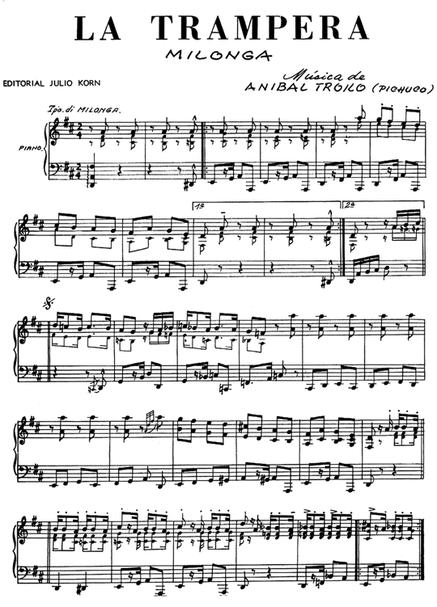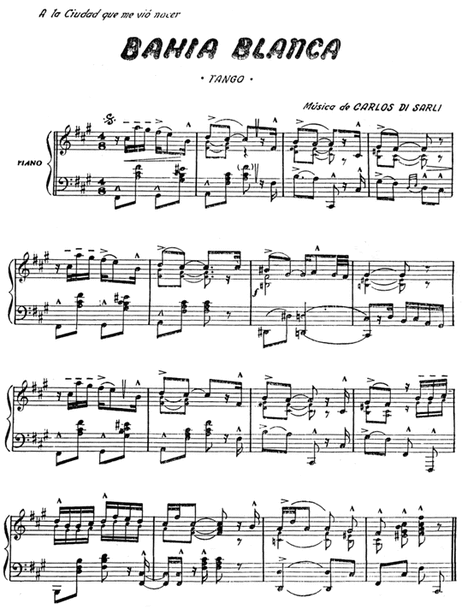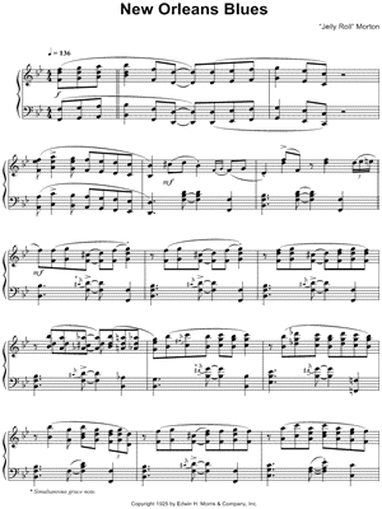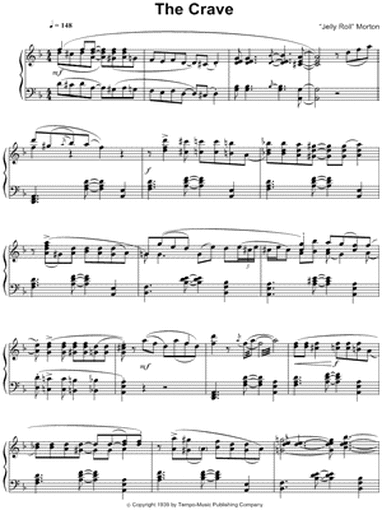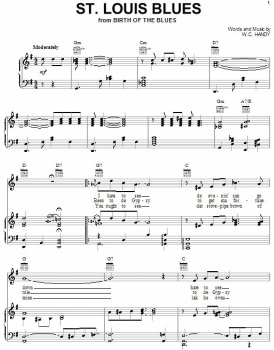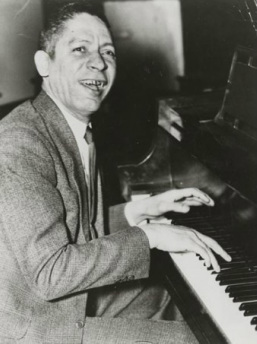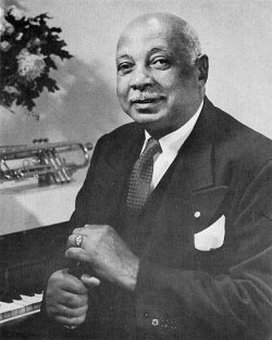The Habanera Rhythm
The habanera rhythm, a Cuban form of syncopation, is used as the rhythmic pulse for some Latin and jazz pieces. Variations of habanera one include the syncopa (or habanera two) and the 3-3-2 (or habanera three). The most frequently seen among these types of syncopations are the first two forms. By the late 1910s, although the original style was still found in tango, the prominent rhythm became syncopa. It was used to accent offbeats in both the accompaniment and melody. In jazz, the habanera rhythm is commonly written in simple quadruple time (4/4); in tango, it is usually found in simple duple time (2/4). Playing on varying sixteenth note subdivisions individualize the three types of syncopations.

First habanera: in simple duple time (2/4), the stress falls on a dotted eighth note, a sixteenth note, and two eighth notes.

Second habanera (or syncopa): in simple duple time (2/4), the stress falls on a sixteenth note, an eighth note, another sixteenth note, and two eighth notes. In simple quadruple time (4/4), double the value of the notes in simple duple time (eighth note, quarter note, eighth note, and two quarter notes).

Third habanera (or 3-3-2): in simple duple time (2/4), there are eight sixteenth notes grouped as three (=3), three (=6), and then two (=8). The rhythm can also be written as single sixteenth notes that sound on the first, fourth, and seventh notes.
Habanera in Tango
|
The score of Aníbal Troilo’s “La Trampera” is heavily syncopated and contains staccato rhythms. The treble and bass clef show eighth rests followed by eighth notes, creating stress on the offbeat (measure 2). The bass clef uses a slightly varied form of habanera one (measure 3). An extended (measures 12-15) and fragmented (measures 23-29) form of syncopa are also present in the melody.
|
In Carlos Di Sarli’s “Bahia Blanca,” habanera two (measures 5-6) and one (measures 6-7) are present throughout the piece. Leaving the first note off of habanera two in the melody (measures 29-31) enhances the syncopation effect.
|
“El Choclo” written by Ángel Villoldo uses the first habanera rhythm in the bass clef for the majority of the tango. “L'amour est un oiseau rebelle” (also known as “Habanera”) from Georges Bizet’s Carmen shows habanera one continuously in the bass clef. “Solita” by Jack Hangauer also exhibits habanera one in a majority of the music. Pedro Laurenz used a lot of the 3-3-2 rhythm in his musical compositions. In "Milonga de mis amores," the rhythm is emphasized as soon as the 3-3-2 begins.
Habanera in Ragtime and Blues
When Ferdinand Joseph Lamothe, better known as Jelly Roll Morton, spoke of the “Spanish tinge” as a necessary component of jazz composition, he was referring to “la habanera."
